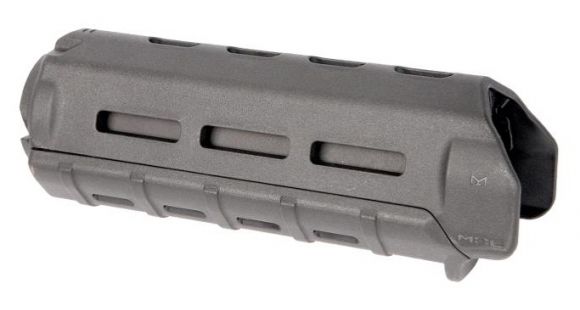The most effective treatment of firearms in a D20/D&D context is by the author Ken Hood. I managed to snag a beta model of his Firearms rules, which so far as I know was by no means really revealed. However, they are superior.
The first thing to grasp is that primitive firearms, that is mainly any firearm up until the 18th century when rifled flintlocks started appearing, is going to be principally balanced with advanced melee and missile weapons. The primary advantage of primitive firearms over slings and longbows, lances and pikes, is the simplicity of employing the weapon effectively. It’s far simpler, quicker and cheaper to train a large number of musketeers than it is to practice a lot of longbow males. A primitive matchlock and even wheel lock weapon is really not that much simpler than a modern crossbow. When it comes to stability, you possibly can safely introduce firearms right into a fantasy campaign without wrecking it.
You will have to deal with two penalties. First, firearms are a robust pressure multiplier for low expert armies. It is a lot harder to be heroic in a world of firearms, and as such NPCs profit from reasonable firearms way over PCs do. A power of musket armed goblins is potentially fairly formidable to low degree PCs. Secondly, you need to deal with the way more consequential influence of gunpowder on your world, which in amount will wreck your game far more completely than firearms ever will. One of the crucial tough and most frustrating things that a DM has to deal with is terrain destruction. A DM soon learns to not build the dungeon out of something flammable, as a result of the time invested in creating the dungeon shall be wasted effort if the Computer just burn the thing down – which they inevitably will try to do, thinking that they’re being really out of the box slightly than actually obvious and sometimes counterproductive (no treasure for them). Even experienced DMs will make this mistake and rue it. Imagine how worse the problem gets when the Laptop’s can tote round barrels of gunpowder, and fill up portable holes with the stuff.
In case you are prepared to forge forward despite those two issues, a few vital issues to note about implementing firearms:
1) Realistically, firearms lived alongside armor for centuries. Real looking firearms don’t ignore armor. They do ignore lighter armors, but they nonetheless have problem penetrating say plate or other superior armors. You possibly can mannequin this with some kind of penetration mechanic which reduces the impact of armor to some degree. You may both have armor/natural decreased by a couple of factors, or you can within the context of D&D say, “Mild armor is ignored.” Both approach, this is a bonus to hit solely when concentrating on creatures in armor, but not as nice as ignoring armor utterly.
2) The largest cause firearms will be balanced till somewhat late in their development is their very sluggish fee of fireplace. Many of the improvements in firearms between their introduction in the 14th century and their dominance within the 18th century was in rate of fire and reliability, with a lesser however vital improvement in range and accuracy. Relying on what midwest industries handguard on, you will have a reload time between 9 rounds (14th century) and about 2 rounds (seventeenth century), with pistols typically being slower and more sophisticated to reload in order that they had been generally treated as one shot disposable weapons during battle. Solely attacking each third to 10th spherical isn’t exactly sport breaking. As such, these aren’t going to be weapons that anybody with the opportunity of a number of attacks per spherical are going to rely on generally, and indeed they are largely going to be weapons used solely in the first round or so of combat earlier than closing to melee. As such, they’re barely higher heavy crossbows with slightly longer rates of hearth and poorer reliability especially in wet circumstances.
3) Catching the taste of a firearm is mostly a matter of overcoming the player’s have to see getting hit by a firearm as one thing extra traumatic than getting hit by a crossbow or a battleax. In other phrases, you have to narrate most circumstances where somebody is shot the way you’d narrate most ‘hits’ in D&D as being grazing, glancing, superficial wounds. Being hit in D&D with a weapon does not imply that the weapon solidly related, only that it in a roundabout way touched the goal. At the very least in the case of humanoids, only with a vital or after hit points are whittled down do weapons start to solidly join. One concession you can make to that is making the crucial from a firearm being more effective than is normal for the crucial for different weapons. For example in 3e, I used a important of 19-20/x3 for firearms, which nicely captured the expectations of being shot without making them grossly overpowered. Related adaptations of being slightly higher when a essential hit is earned might be utilized in 5e.
A lot of this is dealt with in Ken Hood’s work if you will discover it.

As a last caveat, the other massive downside with endorsing know-how in a fantasy world is you might be thereby endorsing science and technology, and with it opening yourself up to metagaming as players use their knowledge to increase the tempo of technical advancement in your world. In other phrases, given matchlocks, you might be prone to have players desirous to invent rifled flintlocks and finally repeating weapons ASAP. Don’t let them do that, as even when you tolerate the metagaming to some extent, advancing technology is a course of that requires master craftsman with years of time on their arms – not one thing that Computer’s can do simply because their players already know the details.